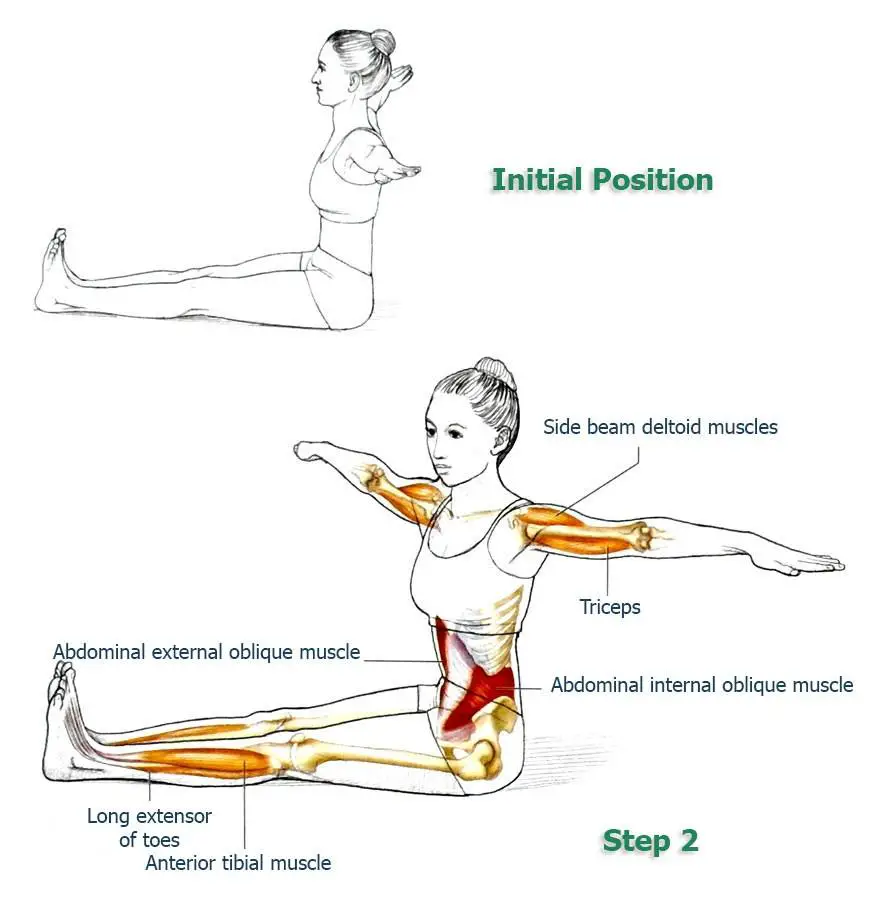If you spend most of your time sitting, you will probably experience fragile back muscles and low spinal flexibility which will lead to bad body posture and a greater risk of some spinal injury. If your back muscles are not strong enough, they won’t be able to carry the body properly. Also, spinal flexibility is crucial for most of the daily activities as well as sports.
So, make sure you increase the flexibility and strength of your muscles when you are 30 as well as after your 40s.
Some exercises will help you achieve this goal, such as those that focus on the spinal rotator muscles. It will significantly improve the flexibility and strength of your back and reduce the chance of some back injuries. Also, if you experience lower back pain as a result of prolonged sitting, even after a few sessions, you will notice significant improvements.
One particular exercise called Spinal Twist is an excellent way to activate your muscles and increase their flexibility and strength.
Spinal Twist
Spinal twist exercise is useful because you will learn how to rotate the lower back and the pelvis while sitting in an aligned position. One specific error that most people make is when rotating the spine, they arch the back and the spinal extensors carry out the movement. Properly, the spine should be rotated by applying the abdominal muscles.
Therefore, learn to use the obliques and transversus abdominis in the following way so that you protect your spine from injury, especially in the case of some challenging activities and sports.
Starting position
Sit on a flat surface and your legs are pointing straight out with your feet flexed. Place the arms out to the sides at shoulder height. Make sure the palms are facing down.
Then:
Exhale and rotate the upper torso to the left, slightly farther in the same direction.
Inhale and rotate the upper trunk to the starting position.
Exhale and rotate the upper trunk to the right, slightly farther in the same direction.
Inhale and return to the starting position.
Repeat this exercise five times on every side.
Remember:
- When in the starting position, try to pull the abdominal muscles up and keep the spine in a straight position, from the neck to the lower back.
- Rotate the part above the pelvis, because the pelvis should remain in the stationary position. Face forward as you twist the spine from the lower back to the head.
- The arms are at shoulder height while the elbows are straightened and both of them create the needed arm line.
- At the same time, slightly pull the shoulder blades together. Remain in this position of the arms and upper torso as you rotate.
Bring this movement to perfection by imagining that the spine is spiraling up, and your head is closer to the ceiling.
Additional Notes
You can also perform this exercise in a lying position. This straight position provides more benefits because it is the position you use the most in your everyday activities.
The main aim of this exercise is to learn how to use the lower back rather than the shoulders for rotation. It is crucial for optimal athletic performance and prevention of back injuries.
When rotating in the vertical position, the right internal and left external obliques are the prime movers. If they acted independently, they would bend your torso forward because they are both rotators and spinal flexors.
In order to keep the spine vertical, it is important to activate the spinal extensors properly.
As shown in the picture above, the extensors, especially the right iliocostalis, right longissimus, left multifidus, and left semispinalis assist in the proper rotation of the torso. If contracted in the appropriate way, these muscles will rotate the spine without arching backward or bending forward.
If you develop and combine the coordination and work of these muscles, you will unconsciously use them in all of your daily activities.
Via The Health Science Journal

